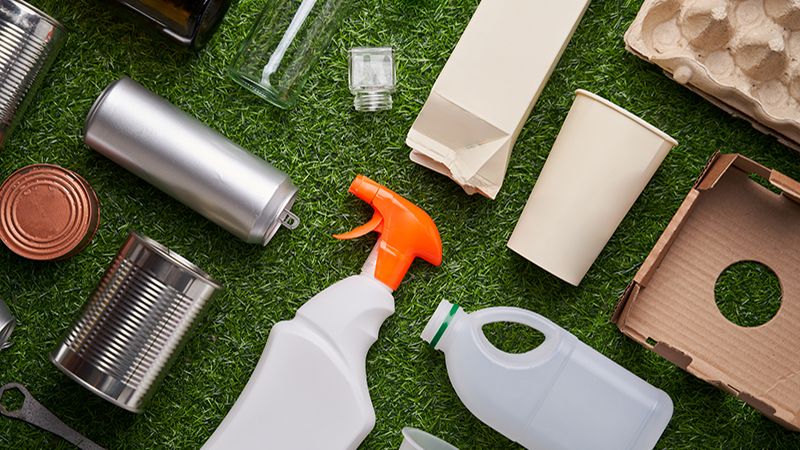And the winner is… the cardboard box.
Cardboard – or containerboard, as it’s known in the industry – remains the most sustainable of established packaging materials at scale. It has the best carbon footprint, and notably, there are no credible alternatives.
Is this a surprise? Well, what’s interesting is how cardboard occupies its prime place so decisively among a welter of product developments and innovations.
Over the plast year, we’ve been conducting a detailed sustainability analysis of different packaging substrates. Cardboard impressed because of how its collection network leads to a recycling rate of more than 80%. US Environmental Protection Agency data implies that recycling at this level saves millions of tonnes annually from reaching landfill.
Compared with plastic, cardboard is also ahead on several other measures.
Because it is homogenous, cardboard can be recycled from one box into another (unlike plastic). Lightweight, single-use cardboard packaging trumps multiple-use plastic containers on transporting fresh produce when tracked across Europe. Lifecycle analysis, or LCA, of carbon footprint and water impact favours cardboard over rigid plastics. One peer-reviewed LCA showed a corrugated box has a 28% lower carbon footprint than a multiple-use plastic crate when transporting fruit across 800km of Europe.
Having spoken to producers of plastic, mixed-use and cardboard packaging, it has become clear to us that hopes for a dramatic improvement in flexible plastic’s languishing recycling rates will always disappoint using current technology.
Flexible plastic is hard to replace because few other substrates available at scale can keep our food fresh. Yet it can only be recycled so many times before losing structural integrity, and recycled flexible plastic will always pose contamination risks when re-used for food. The secondary market for recycled plastics is still small – 6% of total plastic production – with demand and pricing reflecting its role, so far, as simply a weak substitute for primary plastic. Approaches to improve polymer blending in mixed-use waste streams and applications of lower quality recyclate have yet to gain traction.
The list of issues with plastic is lengthy, ranging from the material being non-biodegradable to its production generating high ecotoxicity of freshwater. As per an OECD report in 2022, only 9% of plastic waste is recycled (15% is collected for recycling but 40% of that is disposed of as residues); 15% is incinerated; 50% ends up in landfill; while 22% ends up in uncontrolled dumpsites, is burnt or ends up in the environment.
Alternatives to the mechanical recycling of plastic appear to be some way off.
We have looked at enzymatic recycling in France (for example, Carbios), which is interesting but sub-scale, while chemical recycling is still too expensive. We have also met with a start-up called Pulpex, a packaging technology company backed by Diageo that is making inroads selling fibre-based bottles to replace PET. However, funding costs are significant as the company ramps up.
Beverage cartons have been used for decades to keep drinks such as juices and dairy products fresh or shelf-stable. However, because they are made of different materials laminated together, recycling them is difficult and a cost-effective circular – or ‘closed loop’ – solution impossible.
Among developing technologies, Zotefoams, a UK-listed company providing material solutions for durable foams, has developed the first beverage carton designed for the circular economy. ReZorce, using its bespoke technology, does the same great job of preserving products as standard beverage cartons, but because it’s considered a single raw materia, it is easy to recycle back into the same type of packaging, rather than downcycle into something else – 100% recyclable and up to 100% recycled content.
Beyond examples of fledgling innovation, it’s encouraging to see the increase in global patents for innovative plastic packaging more than double over 2006 to 2017, and there are glimmers of hope that plastic alternatives and recycling can improve. Germany has ingeniously invented a simple ‘green spot’ system marking all recyclable packaging (including plastic), with impressive results. Germany has the highest recycling rate amongst OECD countries.
Designing out waste and keeping materials in use to allow natural systems to regenerate is critical to protecting the planet for future generations. That is why the circular economy is a focus of new legislation around the world.
For now, the obvious and only sustainable solution at scale in rigid packaging is cardboard. Technology is, meanwhile, focusing on solving some of plastic’s recycling issues and finding innovative substitutes.








